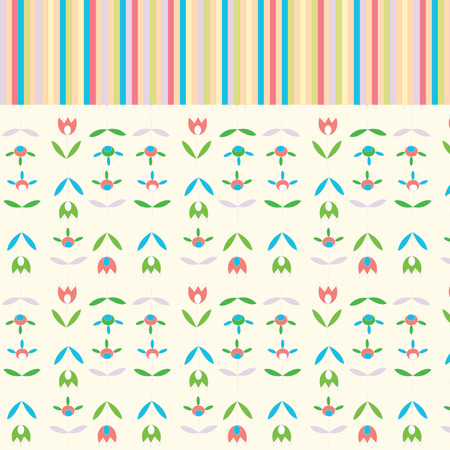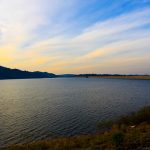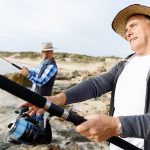Understanding Regional Hatch Patterns
If you want to tie effective custom flies for specific American fishing locations, the first thing to understand is the local hatch patterns. In fly fishing, a “hatch” refers to the emergence of aquatic insects from water into their adult stage, which is when trout and other fish feed on them most actively. Each river or stream across the U.S. has its own unique hatch schedule based on climate, elevation, and water conditions. Knowing what bugs are hatching—and when—can make all the difference in your fly design.
Why Hatch Matching Matters
Fish often become selective feeders during a hatch, meaning they’ll ignore anything that doesn’t look like the real thing. So, if youre fishing the Madison River in Montana during a Salmonfly hatch, you’ll want to tie or carry flies that closely mimic those big stoneflies. On the other hand, if youre on the Delaware River in New York during a Blue Winged Olive hatch, smaller, more delicate patterns will perform better.
Common Hatches by Location
Here’s a quick look at some popular rivers and their common hatches:
| River | State | Common Hatches | Best Months |
|---|---|---|---|
| Madison River | Montana | Salmonflies, Caddisflies, PMDs | June – August |
| Delaware River | New York | Blue Winged Olives, Sulphurs, March Browns | April – October |
| Green River | Utah | Midges, BWOs, Terrestrials | March – September |
| South Platte River | Colorado | Midges, Tricos, Caddisflies | Year-round (varies by section) |
Tying With Purpose: What to Consider
When designing your custom patterns for these rivers, take into account not just the insect species but also their size, color, and behavior. For example:
- Size: Match hook sizes to the natural insect (e.g., #6 for Salmonflies, #18 for BWOs).
- Color: Observe the color variations of local bugs—sometimes even slight differences matter.
- Action: Some insects sit still on the surface; others skitter or flutter. Design your fly accordingly.
The Local Advantage
If youre not sure what’s hatching in a particular region or time of year, check with local fly shops—theyre often dialed in to current conditions. You can also observe insect activity on the water yourself or use hatch charts published online by regional outfitters.
Your Next Step in Custom Fly Tying
Once you’ve nailed down the hatch patterns of your target location, you’re ready to move on to selecting materials and tying techniques that match those specific insects. This will help ensure your flies are not only beautiful but also deadly effective on the water.
2. Choosing the Right Materials for Local Waters
When tying custom fly patterns for specific American fishing spots, choosing the right materials is just as important as the pattern itself. The key is to mimic the natural forage that fish feed on in a particular region. Whether youre fishing the cold, clear waters of the Appalachian streams or casting into the fast-moving rivers of the Rocky Mountains, understanding what trout or bass are eating will help you pick materials that trigger more strikes.
Understanding Regional Forage
Different regions have their own unique aquatic insects and baitfish. For example, in the Appalachian region, native brook trout often feed on small mayflies, caddisflies, and stoneflies. On the other hand, in the Rockies, you’ll find a lot of hoppers during summer months along with large stonefly hatches. Knowing what’s naturally available helps you choose materials that imitate these food sources in texture, color, and size.
How Texture, Color, and Size Matter
The three most important characteristics to consider when selecting fly tying materials are:
- Texture: Soft materials like marabou or rabbit fur provide lifelike movement in water. Stiffer materials like deer hair are great for surface flies like hoppers or beetles.
- Color: Match the hatch by picking colors found in local bugs—olive green, tan, black, and rust brown are common in many regions.
- Size: Use hooks and material proportions that reflect actual insect sizes in your target waters. Too big or too small can turn fish away.
Material Recommendations by Region
| Region | Common Forage | Recommended Materials |
|---|---|---|
| Appalachian Streams | Mayflies, Caddisflies, Stoneflies | Dubbing in olive/tan, CDC feathers, fine wire for nymphs |
| Rocky Mountains | Stoneflies, Grasshoppers, Midges | Foam for hoppers, elk hair for caddis patterns, peacock herl for midges |
| Northern Lakes (e.g., Michigan) | Baitfish, Hexagenia mayflies | Synthetic fibers for streamers, yellow dubbing for Hex patterns |
Pro Tip:
If youre unsure about what forage is present in a particular area, visit a local fly shop or check hatch charts online. Local knowledge is gold when it comes to matching your fly to what fish are actually eating.
Experiment and Adapt
No two rivers are exactly alike—even within the same state. Don’t be afraid to experiment with slightly different shades or material combinations until you find what works best for your home waters or travel destination.

3. Adapting Patterns to Match Local Fish Behavior
When it comes to creating custom fly tying patterns, understanding the behavior and feeding habits of local fish species is key. Different regions across the United States have unique ecosystems, and fish in those areas respond best to flies that imitate their natural food sources. Let’s take a closer look at how regional differences—like trout in the Smoky Mountains and bass in the Ozarks—shape the way anglers design their flies.
Understanding Regional Fish Preferences
Fish species are not only different in size and habitat but also in what they eat and when they feed. For example, trout in cold mountain streams are more likely to feed on small aquatic insects, while largemouth bass in warmer southern lakes might go after frogs or baitfish. Knowing what your target species prefers helps you create a pattern that gets results.
Trout in the Smoky Mountains
The Smoky Mountains are home to wild brook, rainbow, and brown trout. These fish live in clear, fast-moving water and feed primarily on mayflies, caddisflies, stoneflies, and midges. Because of this environment:
- Fly Size: Smaller sizes (16–22) work well.
- Fly Type: Dry flies and nymphs are often most effective.
- Colors: Natural tones like olive, tan, and gray mimic local insect life.
Bass in the Ozarks
The Ozark region offers excellent fishing for largemouth and smallmouth bass in rivers, reservoirs, and creeks. Bass are aggressive feeders with a diet that includes crayfish, minnows, frogs, and even small birds. Custom patterns for this region often focus on movement and bulk to trigger reaction strikes.
- Fly Size: Larger sizes (2–8) attract attention.
- Fly Type: Poppers, streamers, and crawfish imitations work great.
- Colors: Bright or contrasting colors like chartreuse/white or black/blue stand out in stained water.
Comparing Regional Fly Pattern Strategies
| Region | Target Species | Main Food Source | Effective Fly Types | Recommended Sizes | Common Colors |
|---|---|---|---|---|---|
| Smoky Mountains | Trout | Aquatic insects (mayflies, caddisflies) | Nymphs, dry flies | #16–22 | Olive, tan, gray |
| Ozarks | Largemouth & Smallmouth Bass | Crawfish, minnows, frogs | Poppers, streamers | #2–8 | Chartreuse/white, black/blue |
Why Behavior-Based Customization Matters
If youre fishing a high-altitude stream in Colorado or a warm swamp lake in Florida, throwing just any fly won’t cut it. Matching your pattern to local fish behavior increases your chances of success dramatically. You’re not just choosing a fly—you’re speaking the language of the fish. Understanding when they feed (morning vs evening), where they hold (deep pools vs shallow flats), and what they strike (slow drift vs quick retrieve) lets you fine-tune every aspect of your fly design—from weight to flash material.
Tie with Purpose: Think Like a Local Fish!
Your next custom fly should be more than just creative—it should be strategic. Research your destination waters before you tie. Talk to local guides or visit nearby fly shops. Match your materials to what’s naturally available in the area. Whether youre crafting a subtle emerger for wary trout or a flashy streamer for hungry bass, let fish behavior guide every wrap of thread.
4. Incorporating Weather and Water Conditions
When creating custom fly tying patterns for specific American fishing locations, its essential to consider the impact of weather and water conditions. The United States has a wide range of climates—from the rainy, temperate Pacific Northwest to the hot, arid rivers of the Southwest—so your flies need to be tailored accordingly. Adjusting your flies based on seasonal changes, water clarity, and temperature can significantly increase your chances of success on the water.
Seasonal Changes
Fish behavior shifts dramatically with the seasons. In spring, many species become more active as water temperatures rise and insect hatches begin. Summer often brings clearer waters and higher fish activity early in the morning or late evening. Fall is prime time for trout in colder regions like Montana or Colorado, while winter can call for smaller, more subtle flies as fish slow down in colder waters.
Example: Seasonal Fly Adjustments
| Season | Region | Suggested Fly Type | Tying Tips |
|---|---|---|---|
| Spring | Pacific Northwest | Caddis Emergers | Use olive or brown tones with soft hackle materials |
| Summer | Southeastern Streams | Terrestrials (e.g., ants, hoppers) | Incorporate foam bodies for floatation and durability |
| Fall | Northern Rockies | Midges and BWO patterns | Tie smaller sizes (#18–#22) with sparse dubbing |
| Winter | Northeast Rivers | Zebra Midges, Scuds | Use tungsten beads to get deep quickly in cold waters |
Water Clarity Considerations
Clear vs. murky water calls for different fly strategies. In clear water, natural-colored patterns and realistic silhouettes are key because fish can easily scrutinize your presentation. In stained or muddy water, brighter colors or larger profiles help attract attention.
Water Clarity Adjustment Guide
| Water Clarity | Recommended Colors/Materials | Fly Style Example |
|---|---|---|
| Clear Water | Dull greens, browns, grays; natural fibers like CDC or hare’s ear dubbing | Pheasant Tail Nymphs, Parachute Adams |
| Muddy/Stained Water | Chartreuse, black, red; flashy materials like tinsel or UV dubbing | Woolly Bugger with flash tail, San Juan Worms in bright red/pink |
Temperature Effects on Fly Choice and Presentation
The water temperature affects fish metabolism and feeding habits. Warmer temperatures generally increase activity levels—meaning you can use more aggressive retrieves or larger patterns. Colder water slows fish down, so youll want to go smaller and present your flies more slowly.
Quick Tip:
If youre fishing desert rivers like Arizona’s Verde River in summer heat, go with hopper-dropper rigs using foam-bodied hoppers paired with beadhead nymphs. For chilly Oregon streams in early spring, opt for weighted stonefly nymphs fished deep and slow.
By paying attention to these environmental details when tying custom flies, youll better match local conditions and increase your catch rate no matter where in the U.S. youre fishing.
5. Testing, Tweaking, and Perfecting the Pattern
Once youve tied your custom fly for a specific American fishing location, the next step is to see how it performs in real-world conditions. This stage is all about field-testing, gathering input from local anglers, and making adjustments to ensure your fly gets the job done on the water.
Field-Testing Your Fly Patterns
The best way to test your flies is by getting them wet in the waters they were designed for. Whether its a trout stream in Colorado or a bass pond in Georgia, spend time casting your pattern and observing how fish respond. Take notes on everything—from how well the fly floats or sinks to how it behaves during different retrieves.
Key Factors to Observe:
- Strike Rate: Are fish showing interest or ignoring it?
- Durability: Does the fly hold up after multiple strikes?
- Presentation: Does it mimic local forage naturally?
- Water Conditions: How does it perform in clear vs. murky water?
Getting Feedback from Local Anglers
No one knows a fishing spot like the locals. Sharing your pattern with seasoned anglers at local tackle shops or fly fishing clubs can offer valuable insights. Many are happy to test new patterns and share honest feedback about what works—or doesn’t work—on their home waters.
Ways to Gather Feedback:
| Method | Description |
|---|---|
| Fly Swaps | Join fly swaps where anglers exchange and test each other’s flies. |
| Tackle Shop Demos | Ask local shop owners if you can leave samples for regulars to try out. |
| Online Forums | Post photos and ask for critiques on regional fly fishing forums or Facebook groups. |
| Guided Trips | Hire a local guide and use your custom fly during the trip; guides often have sharp observations. |
Tweaking and Refining Your Pattern
After testing and collecting feedback, return to the vice and start making improvements. Maybe the tail needs shortening, or perhaps a flashier body would attract more bites in stained water. Keep detailed notes of what changes you make so you can track which versions perform best.
Tuning Tips by Region:
| Region | Tweaking Tip |
|---|---|
| Northeast Trout Streams | Add natural colors and smaller sizes for wary brook trout. |
| Southeast Bass Lakes | Use brighter materials and bulkier profiles for aggressive strikes. |
| Rocky Mountain Rivers | Add weight or bead heads to get down fast in fast-moving water. |
| Pacific Northwest Steelhead Runs | Incorporate more movement with marabou or rubber legs for better action. |
The goal is not just to create a good-looking fly but one that consistently catches fish in its intended environment. Through careful observation, collaboration with locals, and continual tweaking, youll end up with a pattern that earns its place in every anglers box targeting that specific American waterway.


